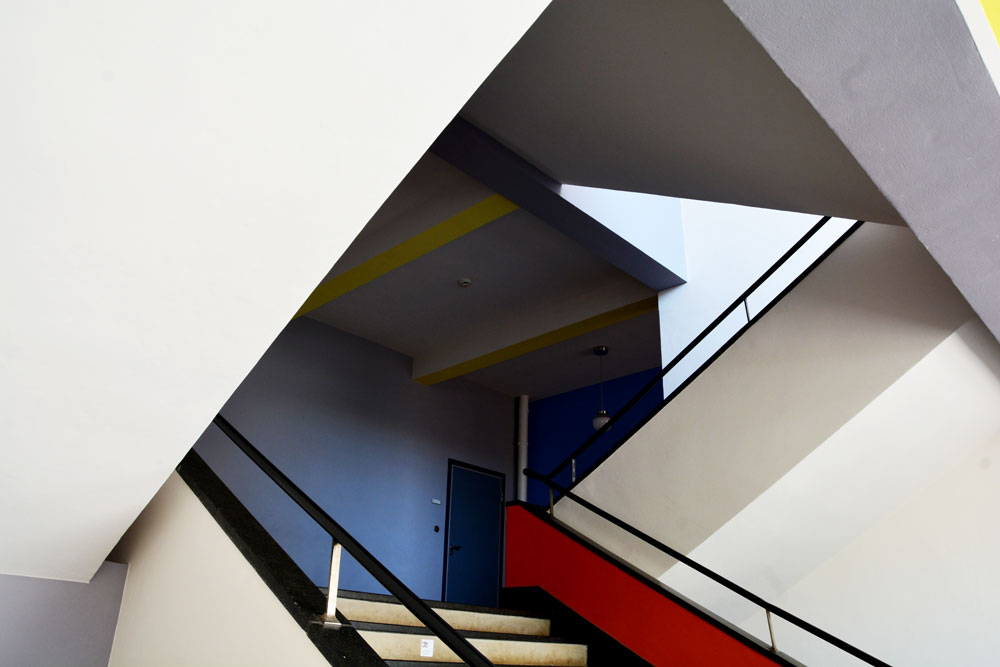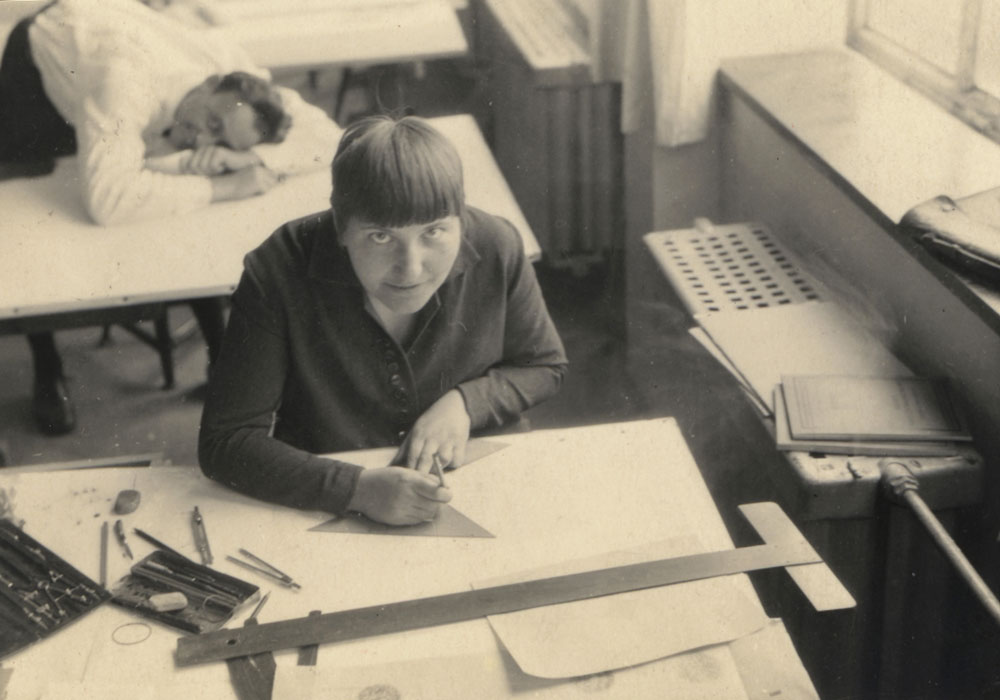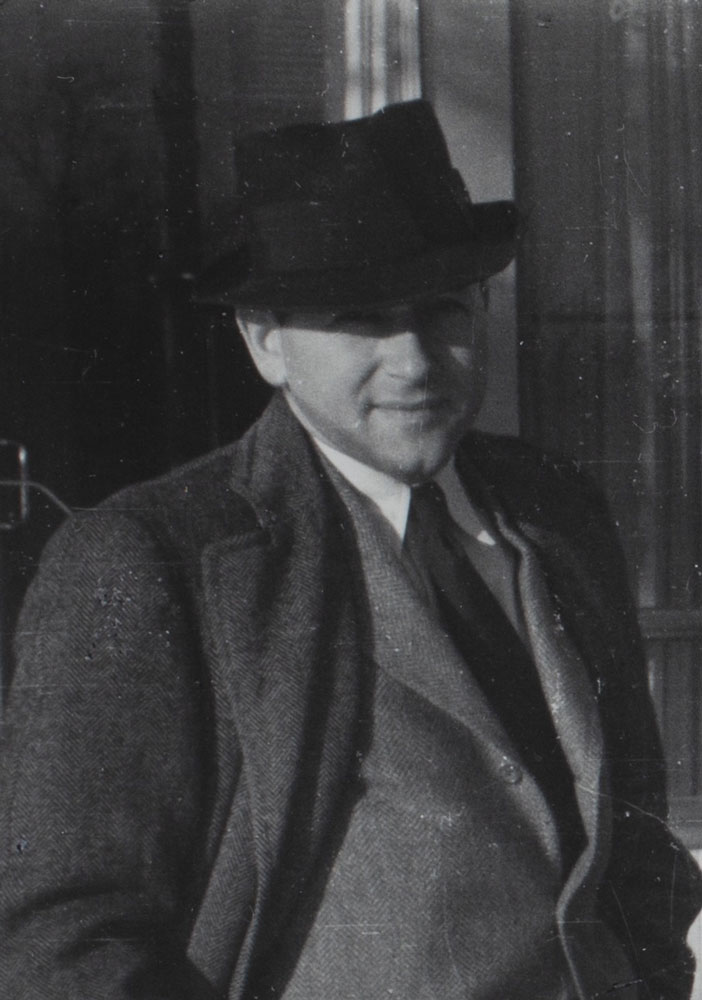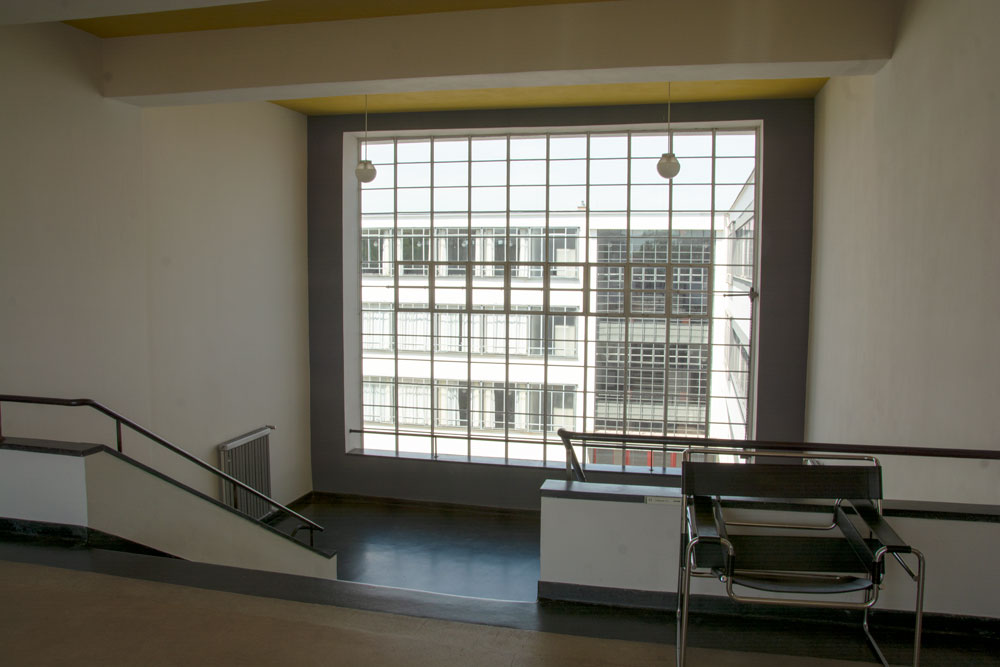
Bauhaus
Walter Gropius was the founder and first director of the Bauhaus (a direct translation would be House of Building). The Staatliches Bauhaus was a school of applied arts, weaving, design (wide-ranging from industrial and theatrical to clothing) and in 1927 it added architecture. Whilst it was only open for 14 years its legacy still reverberates today. It’s not possible to discuss Modernism, Function and Form without bringing the Bauhaus somewhere into the conversation.
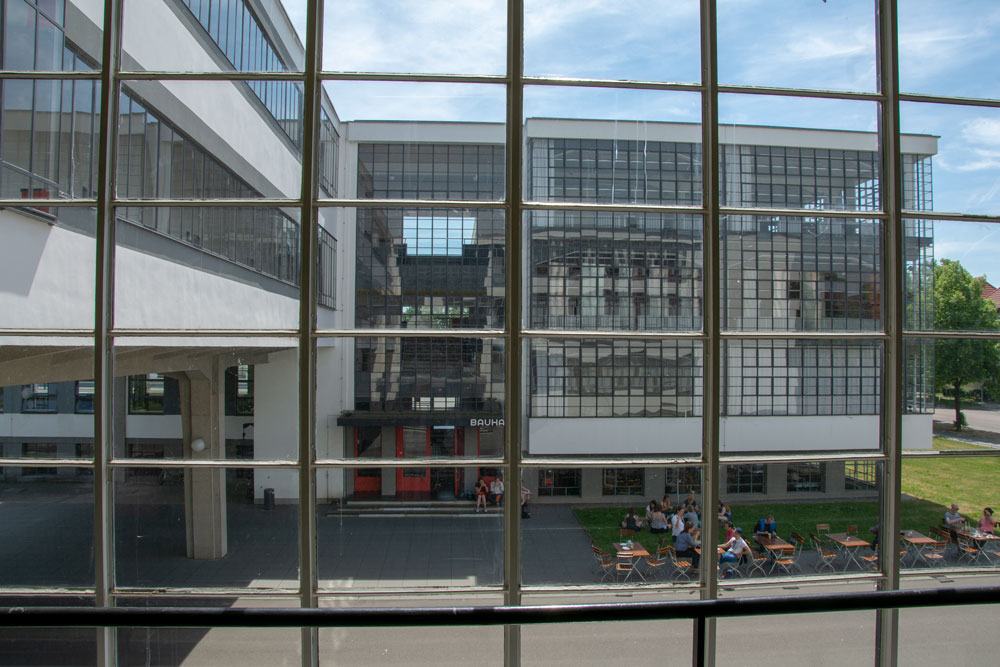
It began life in the town of Weimar in Thuringia, Germany, a place that first encouraged it to open and then, as Weimar became more and more in the thrall of National Socialism, forced it to close leaving Gropius no alternative but to find a new home which was in Roßblau, Dessau.
The school grew out of Gropius’ vision, which he then developed into a Manifesto. In its embryonic stage the Bauhaus brought together the Weimar Institute of Fine Arts, the Hochschule fur Bildende Kunst and the Kunstgewerbeschule, the Weimar School of Applied Arts, a vocational school deeply embedded in the arts and craft movement.
The Bauhaus blossomed as a hybrid, something astonishingly innovative, bringing together creativity, new ideas about industrial design, functionality in a new almost heady fashion. Germany was coming out of the traumas of WW1, the destruction and dismantling of old ideas and hierarchies and a blossoming of the avant-garde. The Bauhaus brought the energy of the new together in one place, an interpretation of Gropius’ vision of Gesamtkunstwerk something complete, total.
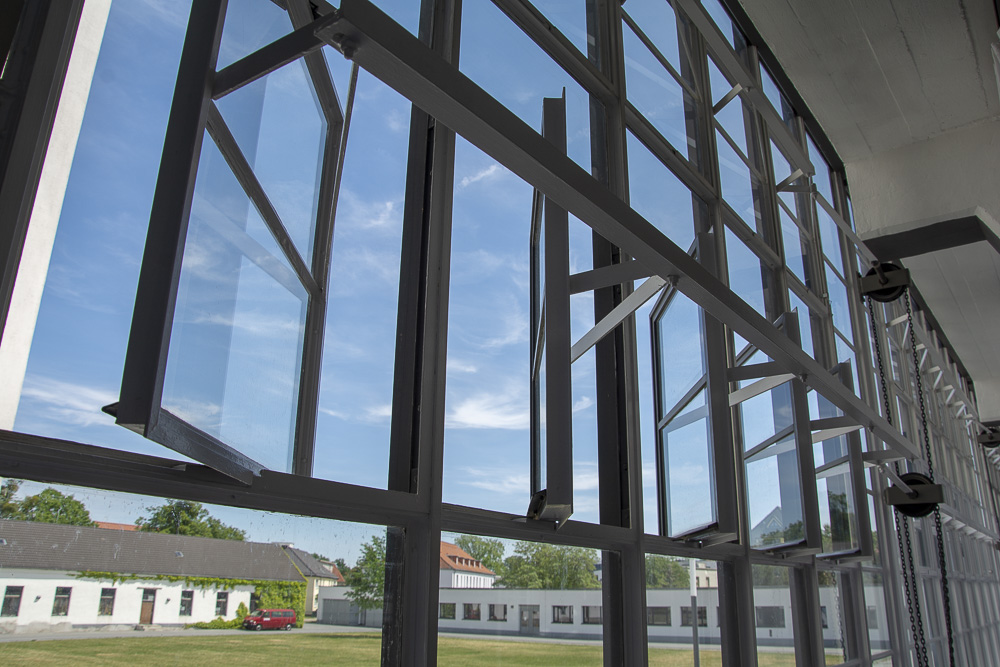
In the mix was teacher, artist, theorist and mystic Master Johannes Itten, who Walter Gropius had known since 1916, and was invited to deliver the ‘preliminary course’ to new students introducing them to colour and composition. Itten was instrumental in bringing to the school weaving workshops, music and relaxation sessions and sharing his deeply held views about the power of colours. One of Itten’s students, Josef Albers, remained and became a teacher in the school in 1922. Lyonel Feininger was another early joiner teaching from 1919. Paul Klee became a master teaching from 1921 to 1931 specialising in bookbinding, mural painting and working in stained glass.
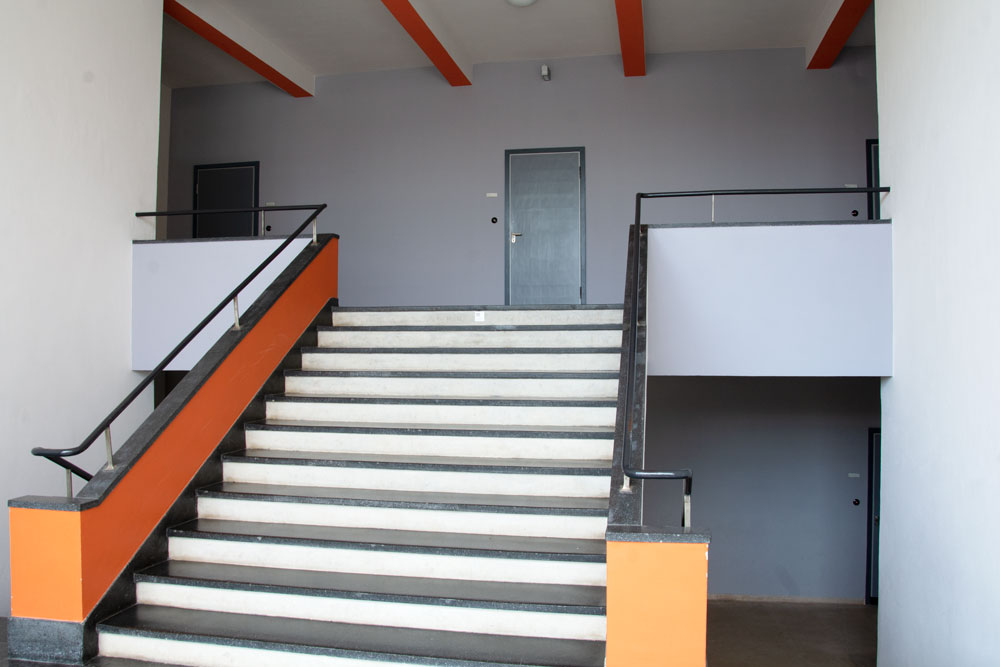
Oskar Schlemmer joined in 1923 as ‘Master of Form’ in the theatre workshop and led the mural and sculpture classes. Kandinsky, who already knew Klee joined in as a teacher and Marcel Breuer was a student who was made Head of the School of Carpentry, he left and later returned as a Master in the Department of Architecture. The names of ‘greats’ just keep coming as do the designs connected to the collaboration between masters and pupils and masters and masters, For example, Walter Gropius invited Marcel Breuer to design the furniture in for the exhibition for the Weissenhofsiedlung (the WuWa)
Itten was in a very different place to Walter Gropius about the direction the school should take in an increasingly industrialised world, the rift that widened eventually prompted him to resign, he was quickly replaced by László Moholy-Nagy.
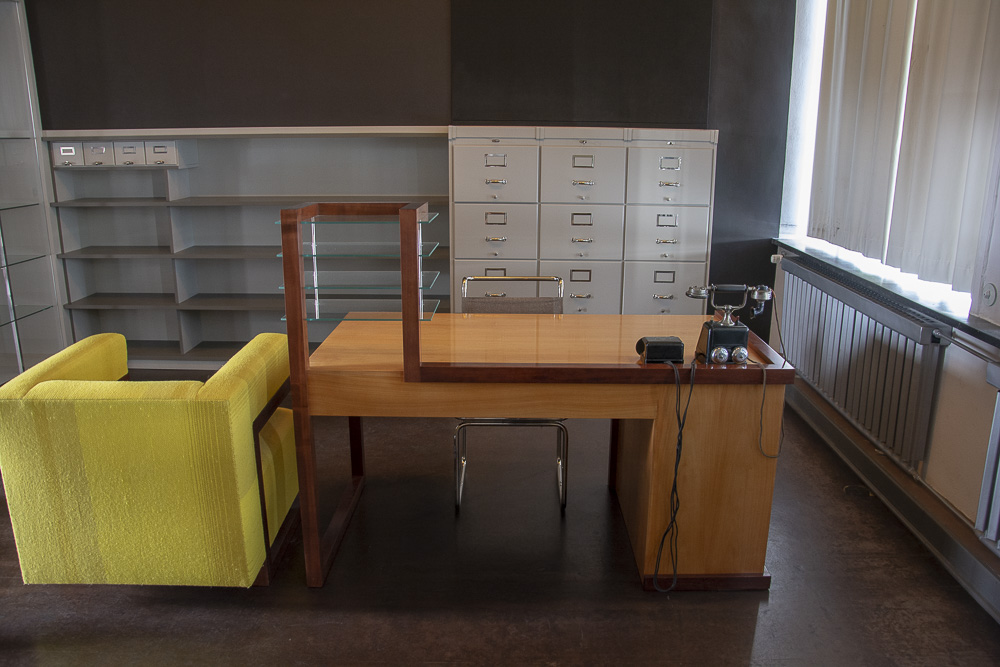
In 1926 the school gained its accreditation enabling it to call itself a School of Design, which allowed it to award students a Bauhaus Diploma. It is famed for its teaching, the roll call of the greats who were both its pupils and the masters
The students and masters were experiencing, interpreting and living through a time of enormous political upheaval added to which they themselves had strong views which ultimately forced the school to move and to change directors, though ultimately it did not save the school.
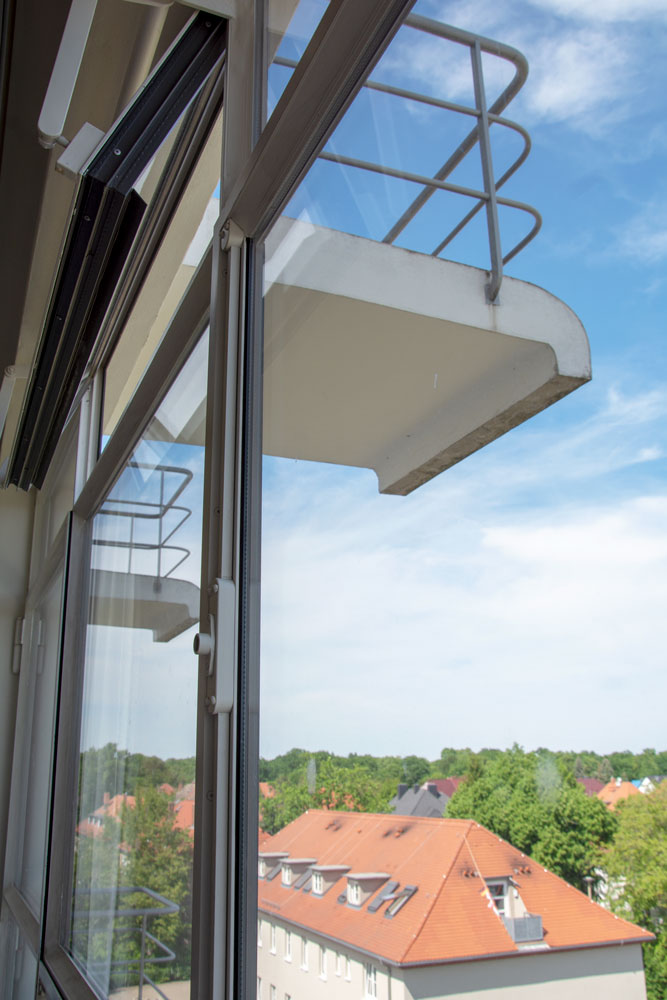
Location:
Weimar from 1919 to 1925 under the direction of Walter Gropius
Dessau in 1925 until 1932 (when the directorship passed to Swiss Architect Hannes Meyer from 1928 to 1930)
Berlin from 1932 to 1933 under the directorship of Mies van der Rohe until the Nazis forced its closure.




